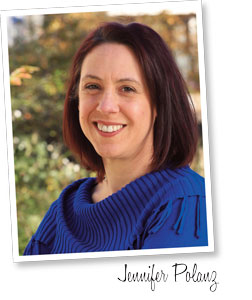8/1/2023
At the Ground Level
Jennifer Polanz

This is what I’m learning the longer I write about not just the controlled environment agriculture industry, but any industry that involves growing something, whether it’s for commercial harvest or to sell the plant itself.
The planning process is vital and there are so many aspects to think about it’s almost paralyzing. From securing funding (which nothing happens without), site selection and engineering to the energy requirements necessary and filling the building with the technology you need to be successful, it’s daunting. On top of that you’d better already know the market you’re going to serve and where you’re going to ship your products, as well as what products you’re growing for maximum profitability. There are so many things to consider before a shovel even goes in the ground.
There are some regions that have a multitude of resources readily available to help and that’s what this month’s cover story is all about. There are many states that welcome all types of growers, but there are only a few that make it a top priority. Virginia is one of those states that’s identified CEA as a priority, and in doing so has created policy and incentives to help attract growers and agtech companies, as well as invested in education and workforce development. You can find out how it came about and what Virginia offers on page 8.
There are so many ways to start off a growing operation poorly. This issue is dedicated to a lot of those pre-shovel-in-the-ground issues I talked about above. I met CEA consultant and engineer Erika Summers at this year’s Indoor Ag-Con and she wowed me (and a lot of other people) with her frank discussion on a lessons learned panel about what vertical farm growers need to consider to be profitable. I asked her to write an article based on her experiences and she suggested talking about the vital step of how vertical farm companies can create the right team before anything else happens. I agreed wholeheartedly and you can find her story on page 12.
Another article topic that came out of February’s Indoor Ag-Con show was the potential for CEA growers to co-locate with other businesses for mutual benefit. Freelancer Dave Kuack dug into that concept and you can find the resulting story on page 16.
I don’t often point people to the Insider section, which mainly houses our news items, but this month there’s something unique in there. Tom Stenzel served as the President and CEO of the United Fresh Produce Association for 28 years before it merged with the Produce Marketing Association to form the new International Fresh Produce Association. Today, Tom is an industry consultant and serves as the executive director of the CEA Alliance, a trade membership group dedicated to advancing the CEA industry. In that capacity, I asked him to write about the importance of growers, allied trade and agtech companies lobbying their representatives in Congress to make sure their voices are heard before the new Farm Bill comes to a vote. And while that may have already happened by the time this goes to print (it’s anybody’s guess), the message of keeping an active voice and engaging your local, state and federal politicians remains timely. Read his thoughts on page 7.
As you read the cover story, too, I hope it becomes clear just how important it is to create and maintain those legislative relationships to further invest in the long-term support of the CEA industry. It doesn’t just benefit the individual companies, but the industry as a whole.